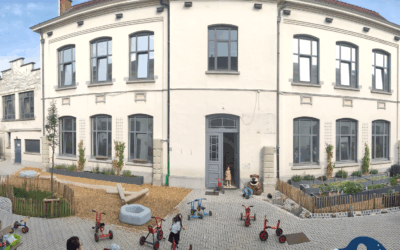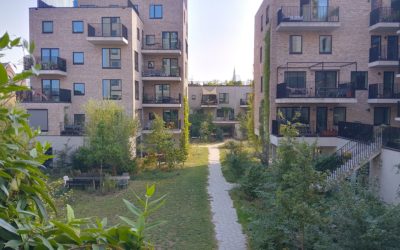The city supports EcoSchools that focus on climate with coaching and a subsidy of up to 30,000 euros.
IPON’s construction projects
Das Projekt
IPON integrates a sustainable green concept into all its construction projects, in which living and nature go hand in hand.
For each project, a planting plan is drawn up by a landscape architect, which is legally enshrined in the environmental permit and translated into binding green regulations. These green regulations form an appendix to the project’s articles of association. In this way, landscaping — both on private and communal areas — becomes an essential part of the residential project.
The green regulations provide tips on which native plants can be used and how residents should plant and maintain them. Each buyer signs these regulations when purchasing their home, ensuring that the ecological added value is maintained in the long term.
In addition, when signing the preliminary agreement, buyers receive the book “De wilde tuin” (The Wild Garden), which IPON reissued with a landscape architect to inspire residents to garden in a nature-friendly way.
A concrete example of this approach is the group housing project in Boombosstraat in Laarne, where six single-family homes and a communal green parking area have been developed according to this principle.
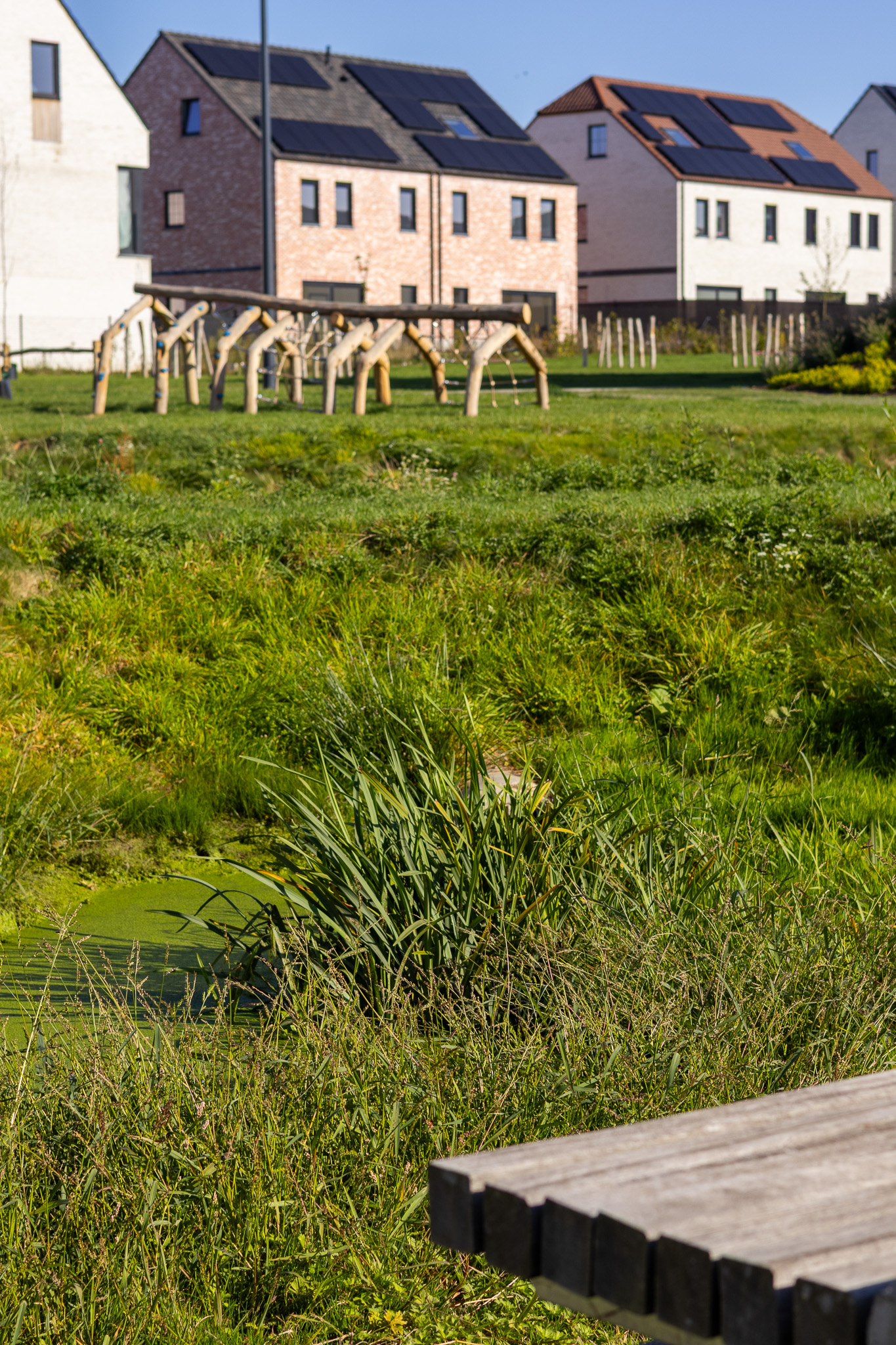
Projektstandort
Beitrag(e)
Projektkosten
Teilnehmer
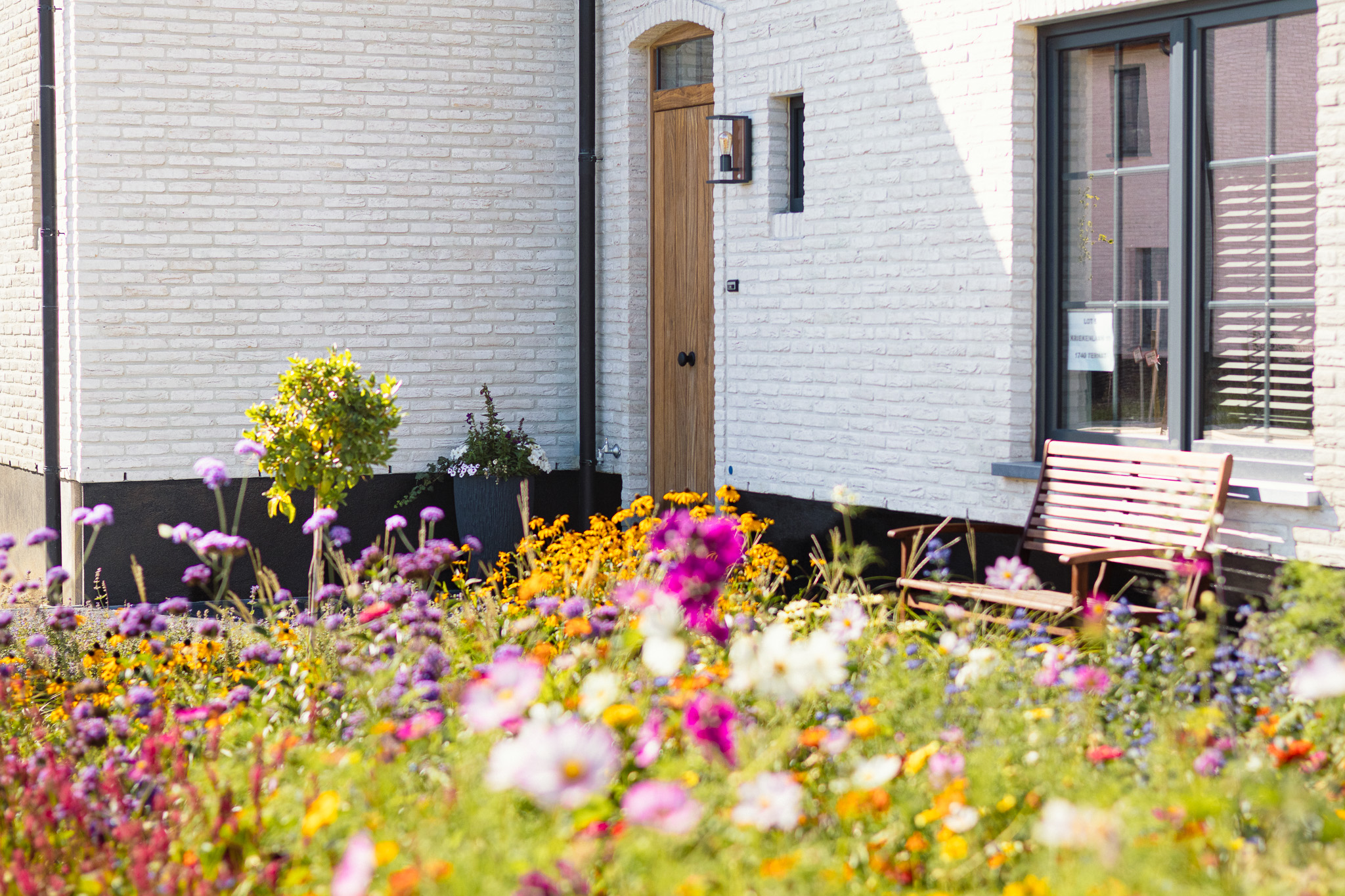
- Landscape architects: drafters of the planting plans and accompanying green booklets.
- Buyers/owners of the homes: responsible for the implementation and maintenance of the planting plan.
- Local authorities: grant the environmental permit in which the green structure is included.
Wie werden die Kriterien des Ziels erfüllt?
Gebäude und Infrastrukturen
- So wenig Veränderung der ursprünglichen Landschaft wie möglich / so viel Natürlichkeit wie möglich, um graue und betonierte Flächen zu ersetzen (e.g. Dach- und Wandbegrünung, Begrünung der Umgebung, Einbeziehung der bestehenden Landschaft in die Infrastruktur);
- Wahrung und/oder Verbesserung der besonderen ökologischen Merkmale des Gebiets (e.g. die Topographie, die Art der Landschaft, die örtliche Pflanzen- und Tierwelt), um die graue/betonierte Oberfläche wirksam zu ersetzen;
- Einbindung der Einrichtungen in die Umgebung und das Umfeld;
- Gegebenenfalls Verwendung einheimischer Arten/Unterarten, die widerstandsfähiger und resistenter gegenüber dem Klimawandel sind;
- Einbeziehung von Elementen, die für die lokale biologische Vielfalt geeignet sind (e.g. Vogelhäuser, die für die Vogelarten vor Ort geeignet sind, Insektenhäuser in angemessener Höhe, geeignete Vegetationsarten);
- Stellen Sie Einrichtungen mit ausreichender Fläche/Länge/Dicke bereit, um die Schaffung von Lebensräumen, grün-blauen Bereichen und Adern zu gewährleisten;
- Bau von Gebäuden unter Beibehaltung von Grün- und Freiflächen und unter Begrenzung der weiteren Verstädterung und Zersiedelung (e.g. ein höheres Gebäude oder ein mehrstöckiges Parkhaus benötigt weniger Fläche am Boden).
Mögliche Initiativen, an denen das Projekt beteiligt ist:
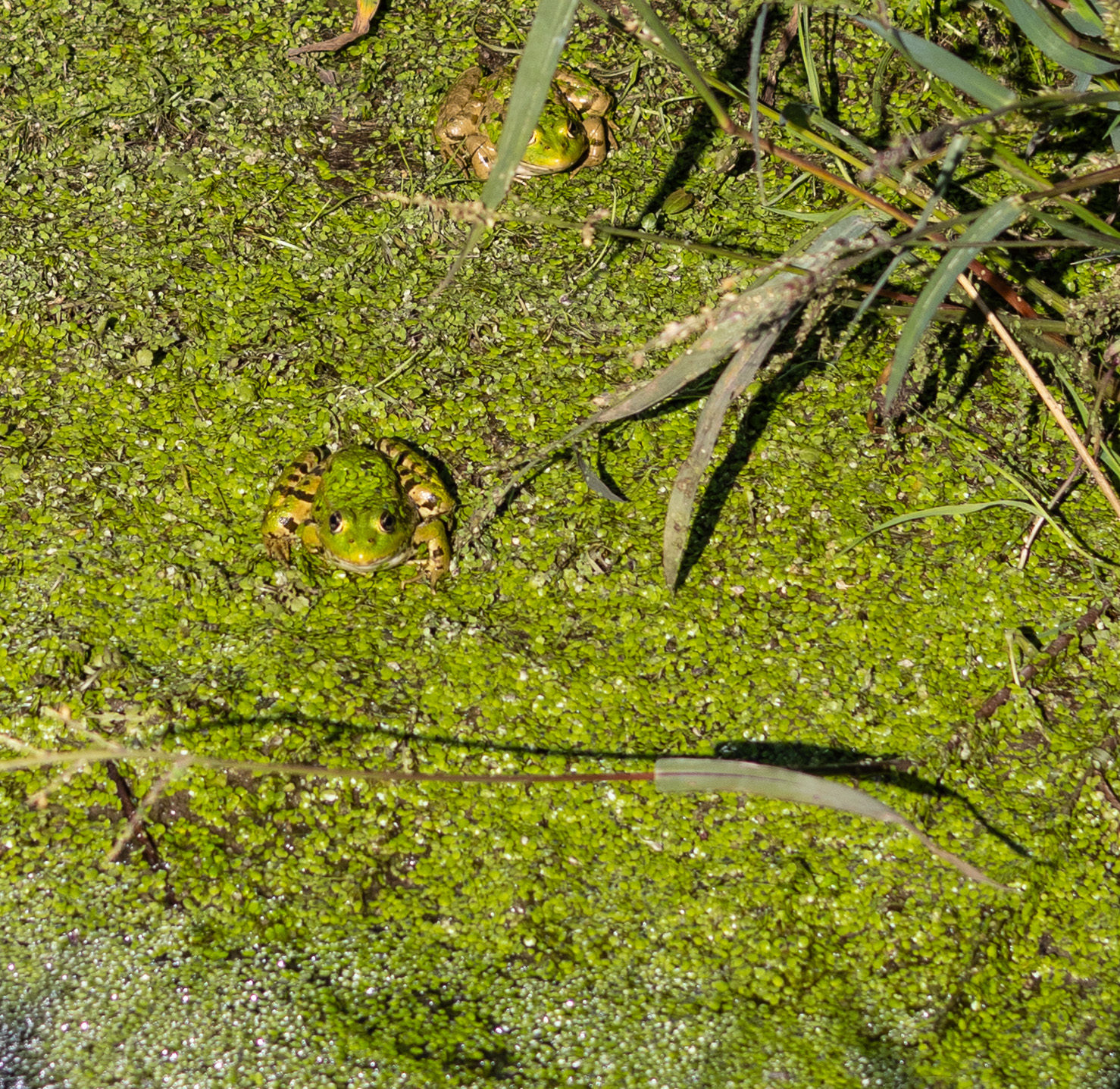
Langfristige Wartung
Compliance with the planting plan is legally enshrined in the environmental permit and in the deed of division that each buyer signs.
Every owner is obliged to maintain the green structure, to maintain it in an environmentally friendly manner and to replace any dead or diseased plants.
IPON has been applying this system for decades and has found that, in practice, the mandatory landscaping is respected and well maintained in almost all cases.
Vorteile
- A pleasant, green living environment that contributes to quality of life and a sense of community.
- Raising awareness about nature-friendly gardening through the book ‘The Wild Garden’ and the accompanying green booklet.
- Use of native plants that support local fauna.
- Strengthening local ecosystems and natural water management.
- Limiting pesticide use and creating natural structures (such as hedges, ponds or picking forests) that provide habitat for birds, insects and small mammals.
Other projects linked to the objective: "Buildings and infrastructures"
Opération Ré-création
Bringing nature into school playgrounds.
Bijgaardehof and Bijgaardepark
Abandoned factory site is being transformed into a park extension and collective housing project that integrates biodiversity.

